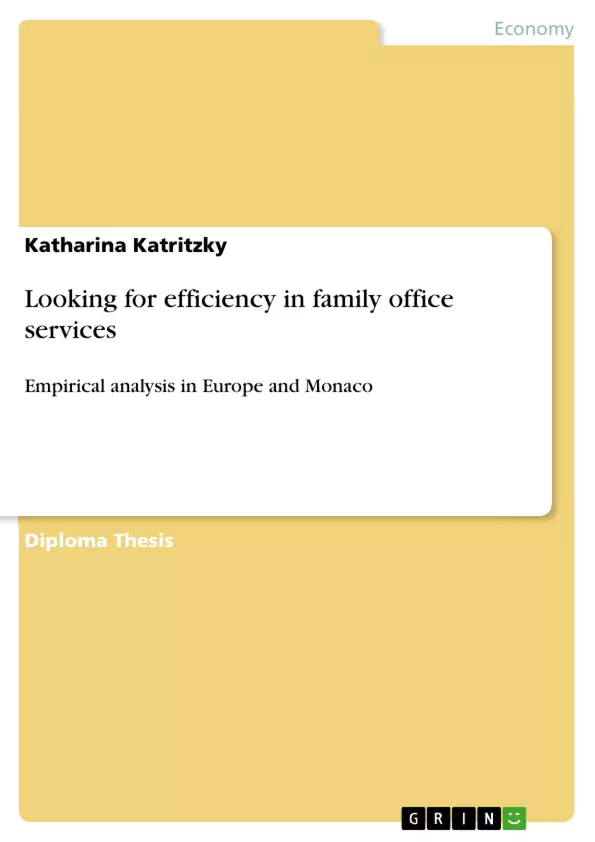The past decades have seen an impressive growth in private wealth on agiobai scale. As a measure of this trend, Forbes magazine, in its ranking of the world's richest people 20 years ago, listed around 140 billionaires. In 2010, the list contained 1,011, an increase of 218 compared to 2009, but still shy of the record 1,125 in 20081 Businessmen and other affluent investors are very good at creating wealth, but they are not necessarily as skillful or interested in managing their assets. They depend more and more on financial professionals to advise them on increasingly demanding wealth management issues.
During the 19th century, trusts have been developed as a set of legal techniques for protecting the assets of individuals and business entities from creditors and as a way to secure an orderly transfer of wealth. When dealing with the next generation, instead of answering to the single patriarchal founder, trustees have to respond to several siblings and cousins. This increased complexity coupled with broader financial, fiscal, lifestyle and family demands have lead to the development of family offices.
The underlying concept is to have all the financial and family related services that one particular family needs in one single office. This model has become a highly valued service model because it facilitates managing complexity. Moreover, the family office allows for secrecy, on-demand availability, transparency, holistic advice and support for the family whenever needed.
Due to the value of the family office service model for the wealthy and with the objective to secure existing and attract new business, the financial industry has been trying extremely hard over the past years to adapt this concept. Most of the major banks today have added a "family office service" type structure next to their product-driven entity. Compared to classical banking relationships, people who cannot afford to or who do not want to set up their own family office may find in these services a more holistic investment advice, superior responsiveness and long term vision.
Inhaltsverzeichnis (Table of Contents)
- Introduction
- Objective of the thesis
- Structure of the thesis
- Empirical approach
- Ultra High Net Worth Individuals
- Classification of wealth
- Origins of wealth in Europe and Monaco
- Ownership and sale of company
- Inheritance
- Accumulated income
- Successful investment activity
- Size of wealth
- Segmentation of affluent investors
- Affluent investors and family office models
- Key characteristics of wealthy
- Complexity
- Control
- Connections
- Needs and aspirations of wealthy
- Overview of needs & aspirations
- Trust
- Transparency
- Privacy
- Holistic advice
- Long term oriented advice
- Tailored advice on alternative investments
- Independency
- Benefits of having a family office
- Family Office Background
- Origins and evolution of family office concept
- Early origins of care taking concept
- European origins of family office type services
- U.S. development of family offices in the 19th century
- Revival of family office concept in 20th century Europe
- Reasons for establishing a family office
- Separation of family business assets from family wealth
- Intergenerational wealth transfer
- Sudden increase in liquid wealth after a transaction
- Common categorization of family offices
- Single family office
- Multifamily office
- Commercial family office
- Virtual family office
- Determinants of single family office structure
- Size of the family
- Family involvement
- Family background
- The family office manager
- Categorization according to in-house services
- Administrative family office
- Hybrid family office
- Comprehensive family office
- Family Office Services
- Wealth management
- Asset allocation
- Manager selection & monitoring
- Risk management
- Accounting & administration
- Family governance & education
- Life management & concierge services
- Philanthropy
- Fiscal & legal services
- New trends in family office market
- New trends in family offices
- Networking among peers
- Unbundling of value chain components
- Global screening for opportunities
- Regulation of family offices in the US and Europe
- Consequences of new trends
- Standardization of offers for fundamental services
- Stringent disclosure of financial interests
- Specialization of advice through open architecture
- Co-direct investment with other family offices
- Consolidation and institutionalization of family office market
- Technology as a key wealth management tool
- Consulting services
Zielsetzung und Themenschwerpunkte (Objectives and Key Themes)
This thesis empirically analyzes the efficiency of family office services in Europe and Monaco. The main objective is to understand the needs and aspirations of ultra-high-net-worth individuals (UHNWIs) and how family offices address these. * Classification and characteristics of UHNWIs * Origins and evolution of family offices * Services offered by family offices * Efficiency and challenges in family office services * Emerging trends in the family office marketZusammenfassung der Kapitel (Chapter Summaries)
The introduction outlines the thesis's objective and structure. Chapter II defines UHNWIs, exploring their wealth origins, size, key characteristics, and needs. Chapter III details the history and evolution of family offices, their various structures, and reasons for their establishment. Chapter IV examines the diverse services provided by family offices, including wealth management, accounting, family governance, and more.Schlüsselwörter (Keywords)
Family office, Ultra High Net Worth Individuals (UHNWIs), wealth management, financial services, Europe, Monaco, efficiency, empirical analysis, private wealth management.- Citation du texte
- Katharina Katritzky (Auteur), 2010, Looking for efficiency in family office services, Munich, GRIN Verlag, https://www.grin.com/document/186809



